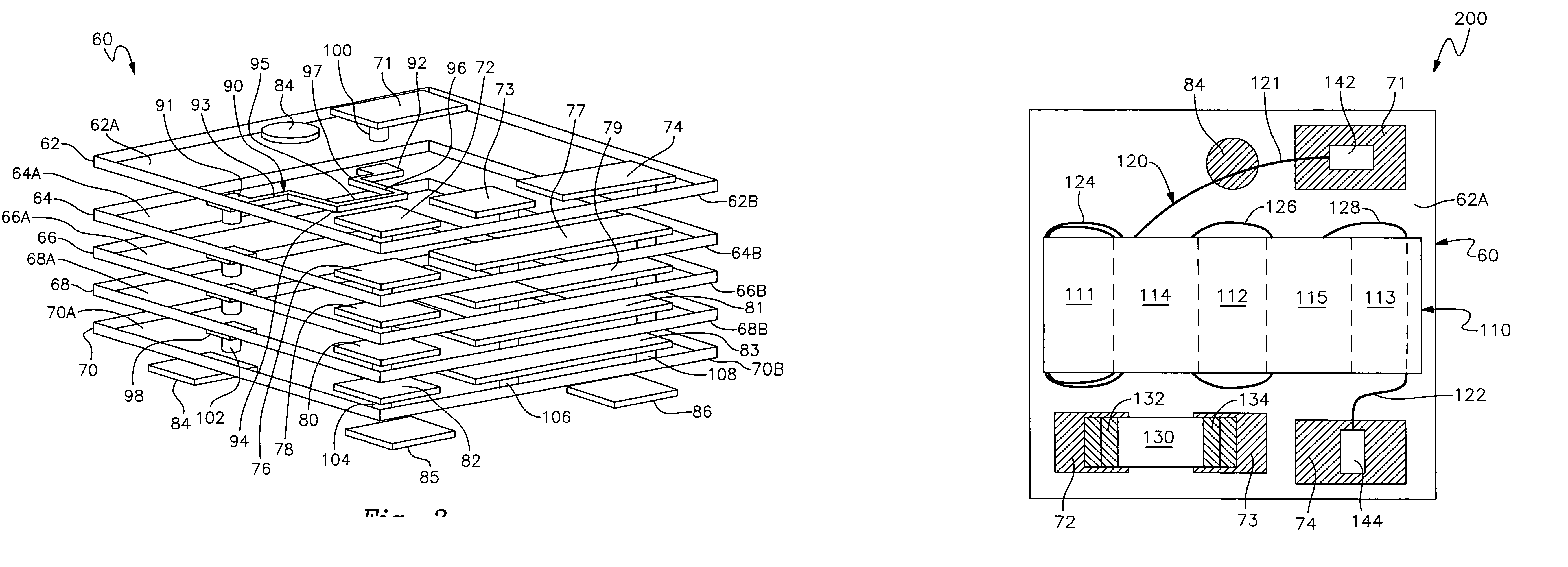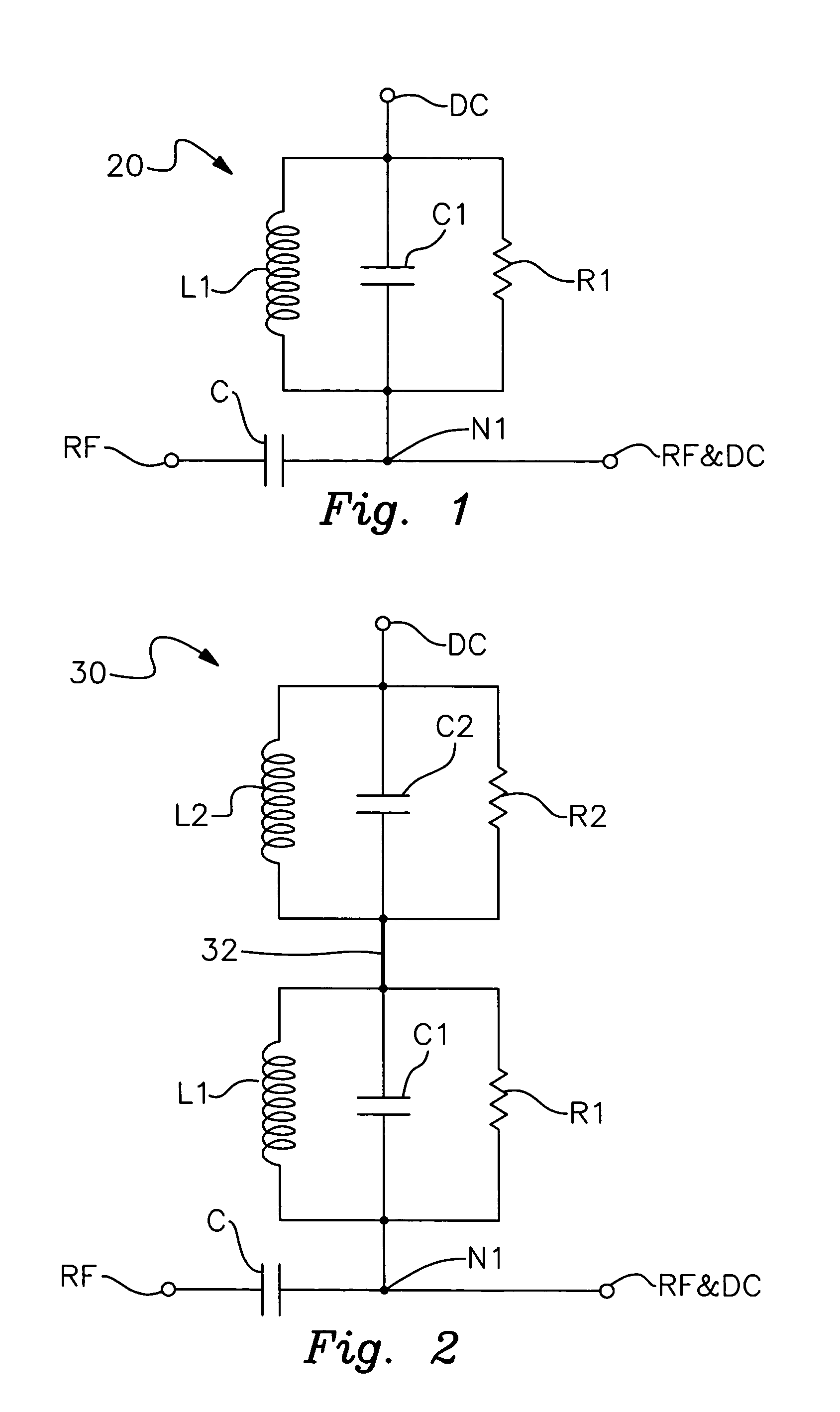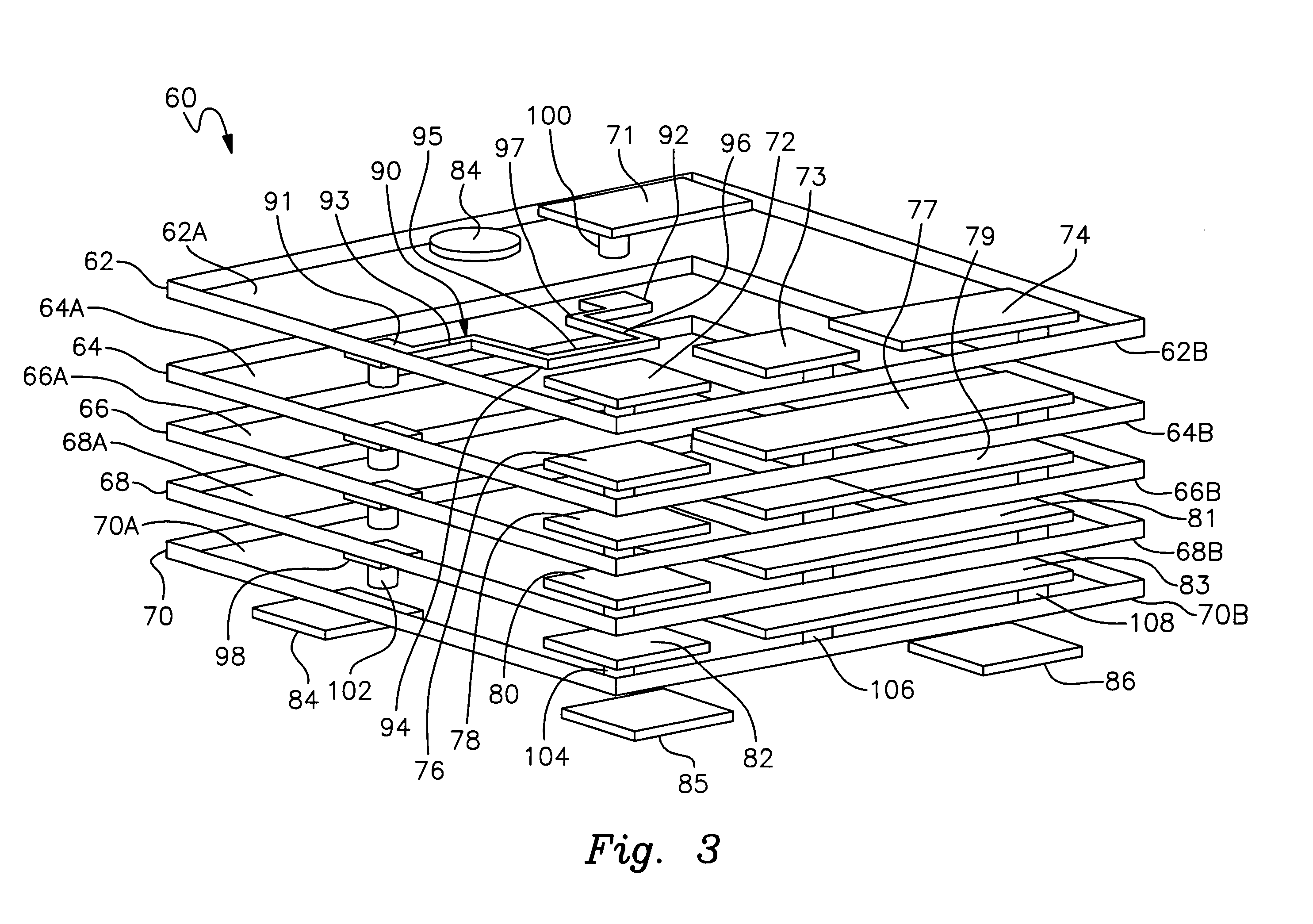Miniature wideband bias tee
a bias tee and wideband technology, applied in the field of bias tees, can solve the problems of low parasitic resistance, poor high frequency electrical performance of bias tees, large parasitic capacitance, etc., and achieve the effect of low cost and small package siz
- Summary
- Abstract
- Description
- Claims
- Application Information
AI Technical Summary
Benefits of technology
Problems solved by technology
Method used
Image
Examples
Embodiment Construction
[0021]Referring to FIG. 3, an exploded view of a low temperature co-fired ceramic (LTCC) substrate 60 is shown. Substrate 60 has a top surface 62A and a bottom surface 70B. LTCC substrate 60 is comprised of multiple layers of low temperature co-fired ceramic material. Planar layers 62, 64, 66, 68 and 70 are all stacked on top of each other and form a unitary structure 60 after firing in an oven. LTCC layers 62–70 are commercially available in the form of a green unfired tape from Dupont Corporation. Each of the layers has a top surface, 62A, 64A, 66A, 68A and 70A. Similarly, each of the layers has a bottom surface, 62B, 64B, 66B, 68B and 70B.
[0022]The layers have several circuit features that are patterned on the surfaces. Layer 62 has several circuit features that are patterned on surface 62A. Surface 62A has four terminals 71, 72, 73 and 74 and an orientation mark 84. The terminals are electrically connected to vias. Terminal 71 is connected to via 100. Terminal 72 is connected to...
PUM
 Login to View More
Login to View More Abstract
Description
Claims
Application Information
 Login to View More
Login to View More - R&D
- Intellectual Property
- Life Sciences
- Materials
- Tech Scout
- Unparalleled Data Quality
- Higher Quality Content
- 60% Fewer Hallucinations
Browse by: Latest US Patents, China's latest patents, Technical Efficacy Thesaurus, Application Domain, Technology Topic, Popular Technical Reports.
© 2025 PatSnap. All rights reserved.Legal|Privacy policy|Modern Slavery Act Transparency Statement|Sitemap|About US| Contact US: help@patsnap.com



